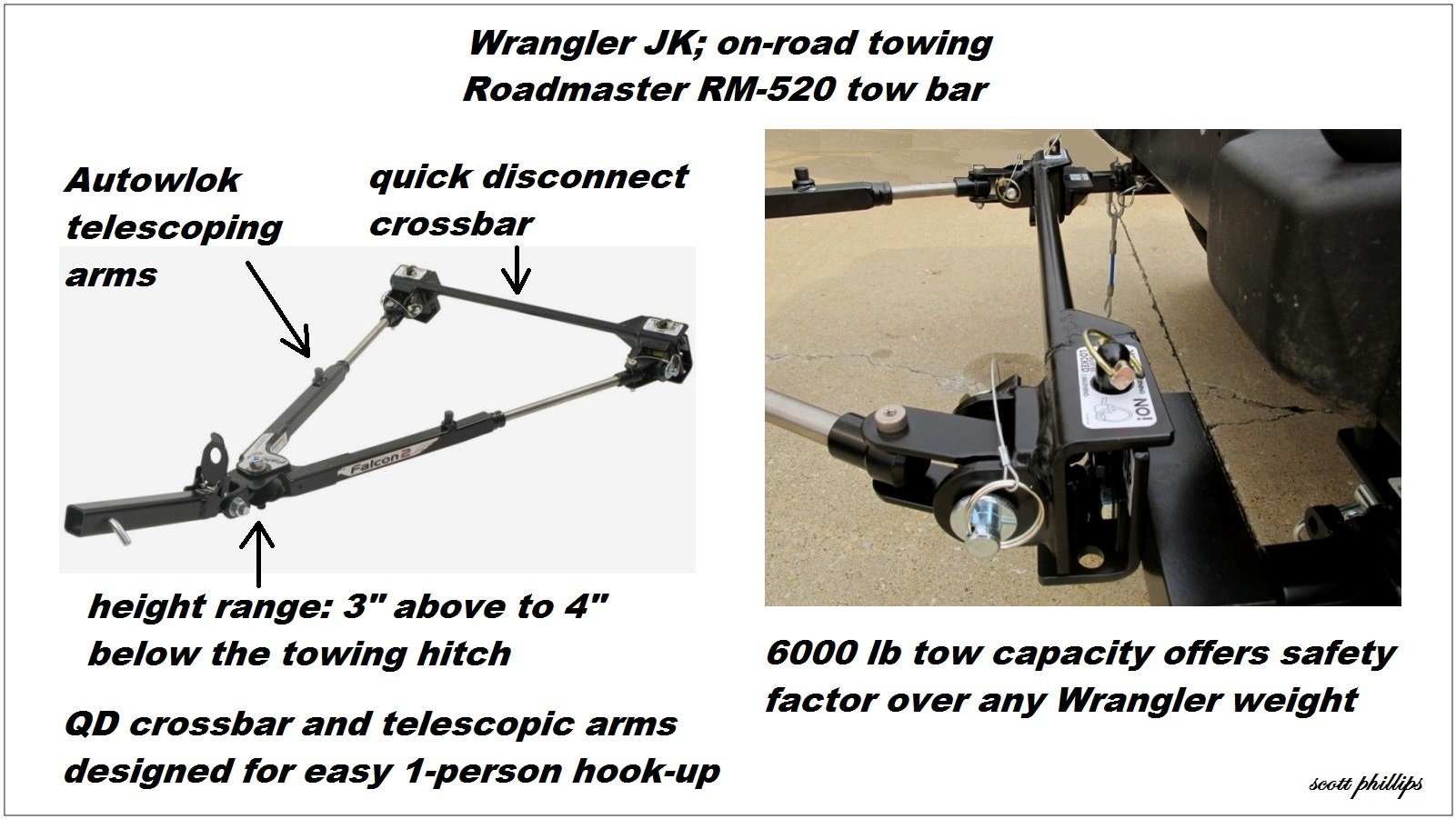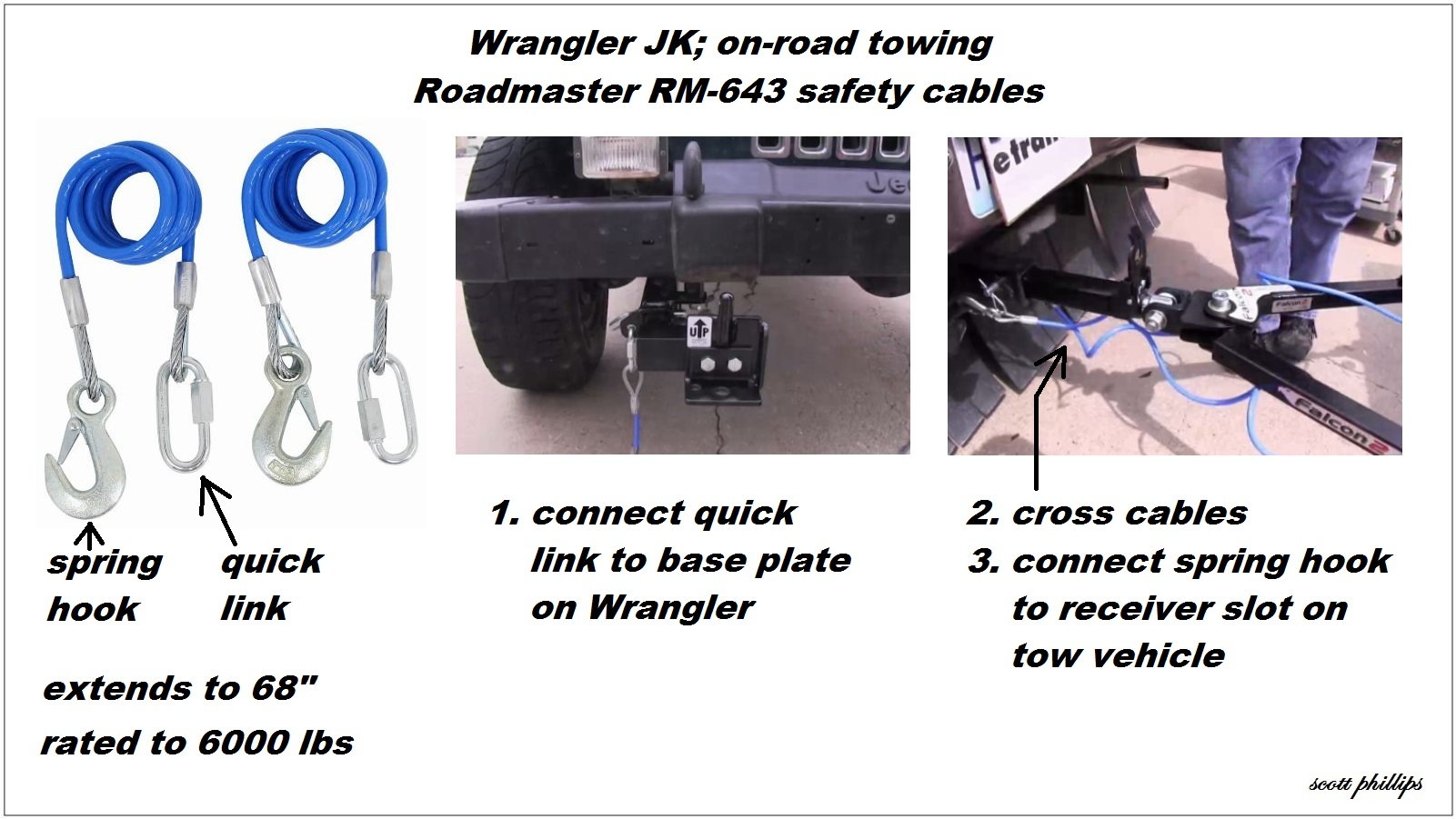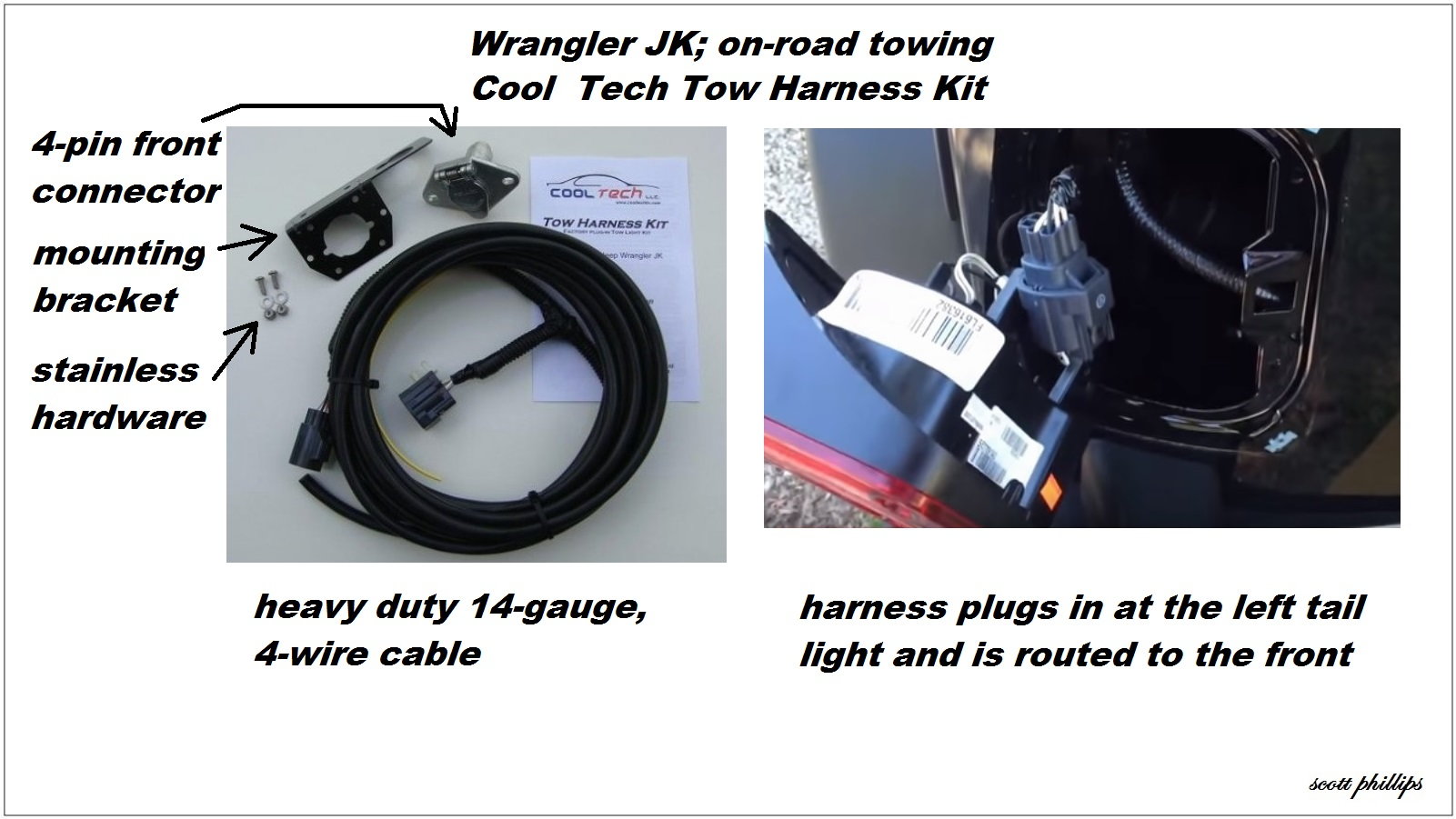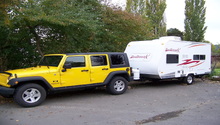Jeep Wrangler JK: How to Tow Your Jeep
Read on to learn about the five components you must have to safely tow the Wrangler JK, and how to set up your Toad to be legal in all 50 states.
This article applies to the Jeep Wrangler JK (2007-Present).
Trailer-ing and towing are our two options for transporting the Wrangler over the road. Trailer-ing requires no mods to the Jeep. However, the trailer is expensive, the additional 1,500 lbs reduces fuel economy, and the trailer must be stored at the destination. Flat towing requires just a few mods to the Wrangler JK. Note that the "bulldog teeth" tow hooks are only meant for light recovery and tie-down, as they are bolted to the bumper horns rather than the main frame. Additionally, Jeep does not recommend attaching D-ring tow hooks to the stock front bumper, as it is not sturdy enough to endure the stress of pulling the 4,000+ lb Wrangler.
For the serious work of safe on-road towing, the Wrangler requires five components:
- Base plates bolted securely to the front frame member. These base plates are equipped with standard 2" hitch receivers to provide for a wide range of towing and aggressive recovery options.
- A tow bar with a minimum rating of Class 3 for pulling 5,000 lbs.
- Safety cables to prevent separation if the hitch fails.
- A tail light wiring harness to provide tail, brake and turn signal lights on the towed vehicle.
- A supplemental braking system to aid in stopping the extra 4,000 lbs, which is required in many states.
With the Wrangler's popularity, towing component choices are abundant. The components shown below represent sturdy, proven gear with convenient features in the mid-price range.

Materials Needed
- Towing base plates
- Tow bar
- Safety cables
- Tail light wiring harness
- Supplemental braking system
- Socket wrench set
- Drill
- Screwdriver set
- Pliers
Step 1 – Install towing base plates
- Base plates can be used with the stock Wrangler bumper.
- The removable draw bar extensions are pinned into standard 2", Class 3 receivers.
- With the draw bars removed, the dual receivers are mostly hidden under the front bumper.
- The dual receivers also serve as strong recovery points for D-ring hitch adapters.
For detailed information and instructions see eTrailer.com's base plate for tow bar.

Pro Tip
Base plate installation difficulty is Moderate. It requires removing the front bumper, drilling holes in the frame and cutting the plastic splash pan. May require two people.
Step 2 – Tow bar
The Wrangler JK line weighs 3,800 to 4,500 lbs and requires a Class 3 tow bar rated to pull 5,000 lbs. The Roadmaster Falcon 2 is rated for 6,000 lbs and mates to the Roadmaster base plates. It can be hooked to the Wrangler in minutes by one person. The Autowlok telescoping arms allow variable reach to the Jeep bumper and the quick disconnect bar pins into place. When the tow vehicle begins moving, the arms lock rigidly.
For details, see eTrailers.com's two bars.

Step 3 – Safety cables
The safety cables prevent separation if the hitch fails. The quick link is connected to the frame mounted base plate on the Wrangler and the spring hook is connected to the slot in the tow vehicle's receiver. The coils keep the cables from dragging and the vinyl sheath won't scratch the tow bar. The cables are crossed to help limit the Wrangler's lateral motion if the hitch breaks. The Roadmaster RM-643 galvanized cables are rated to 6,000 lbs and extend to 68".
For details, see eTrailer.com's accessories and parts.

Step 4 – Tail light wiring harness
For occasional towing, temporary magnetic lights can be attached to the rear of the Wrangler and the wiring routed up to tow vehicle. However, the best solution for regular towing is to operate the Wrangler's own lighting system by connecting it to the tow vehicle's lights. The Cool Tech JK Tow Harness is an easily installed and well regarded choice; which plugs into the the left tail light connector and is routed to the front, where the umbilical connector plug is mounted near the base plate hitch receivers. The Cool Tech harness will illuminate tail lights, brake lights, turn signals and side markers.
For more information, see CoolTechllc.com's parts and accessories.

Pro Tip
Some towing setups may use the Wrangler battery for component power and require that a fuse is pulled to avoid interference with the turn signals operation. Study your setup to see if this is necessary.
Step 5 – Supplemental braking system
Towing requirements vary by state with some mandating supplemental braking on all towed vehicles, and others graduating the requirement by towed vehicle weight. However, it is always wise and prudent to tow a 4,000 lb Wrangler with a supplemental braking system, including an emergency breakaway detector. As with all things Wrangler, there are scores of choices with different means of operation.
The BrakeBuddy Digital Classic is a portable unit that can be quickly switched between vehicles. When it detects forward inertia from the tow vehicle slowing, it uses compressed air to modulate an arm that acts directly on the Wrangler's brake pedal. It uses power from the Wrangler's battery operated power outlet and it will activate the Wrangler's own brake lights during braking. It does not, however, operate the tail lights or turn signals. The BrakeBuddy comes with a breakaway system that will stop a loose Wrangler and a wireless receiver in the tow vehicle to let you monitor its operation.
For detailed instructions, see BrakeBuddy.com

Pro Tip
BrakeBuddy is designed to work with zero brake vacuum pressure and the ABS off.
Step 6 – Towing procedure
- Always comply with the instructions in your owner's manual and the component instructions.
- Always tow the Wrangler with all four wheels on the ground.
- Tow with the transfer case in neutral and the manual transmission in gear. This is to keep the transmission lubricated and prevent overheating.
- Tow with the steering wheel unlocked.
- The Wrangler battery may be connected or disconnected as needed by the components you are using.
- If you are towing with the battery connected, consider using a battery tender to keep it charged.
Step 7 – State towing laws
For a comprehensive guide to state towing laws, see OnlineTowingGuide.com
| Minimum Towed Vehicle Weight | States Requiring Towed Vehicle Brakes Above That Weight |
|---|---|
| zero lbs | Kansas, North Dakota, Wyoming |
| 1,000 lbs | New York, North Carolina |
| 1,500 lbs | California, Idaho, Nevada, New Hampshire, Tennessee |
| 2,000 lbs | Mississippi, Ohio |
| 3,000 lbs | Alabama, Arizona, Arkansas, Colorado, Connecticut, DC, Florida, Georgia, Hawaii, Illinois, Indiana, Iowa, Louisiana, Maine, Maryland, Michigan, Minnesota, Montana, Nebraska, New Jersey, New Mexico, Oklahoma, Pennsylvania, South Carolina, South Dakota, Vermont, Virginia, Washington, West Virginia, Wisconsin |
| 4,000 lbs | Delaware, Rhode Island, North Carolina |
| 4,500 lbs | Texas |
| 5,000 lbs | Alaska |
| 10,000 lbs | Massachusetts |
Related Discussion
- Towing a Jeep - JK-Forum.com






